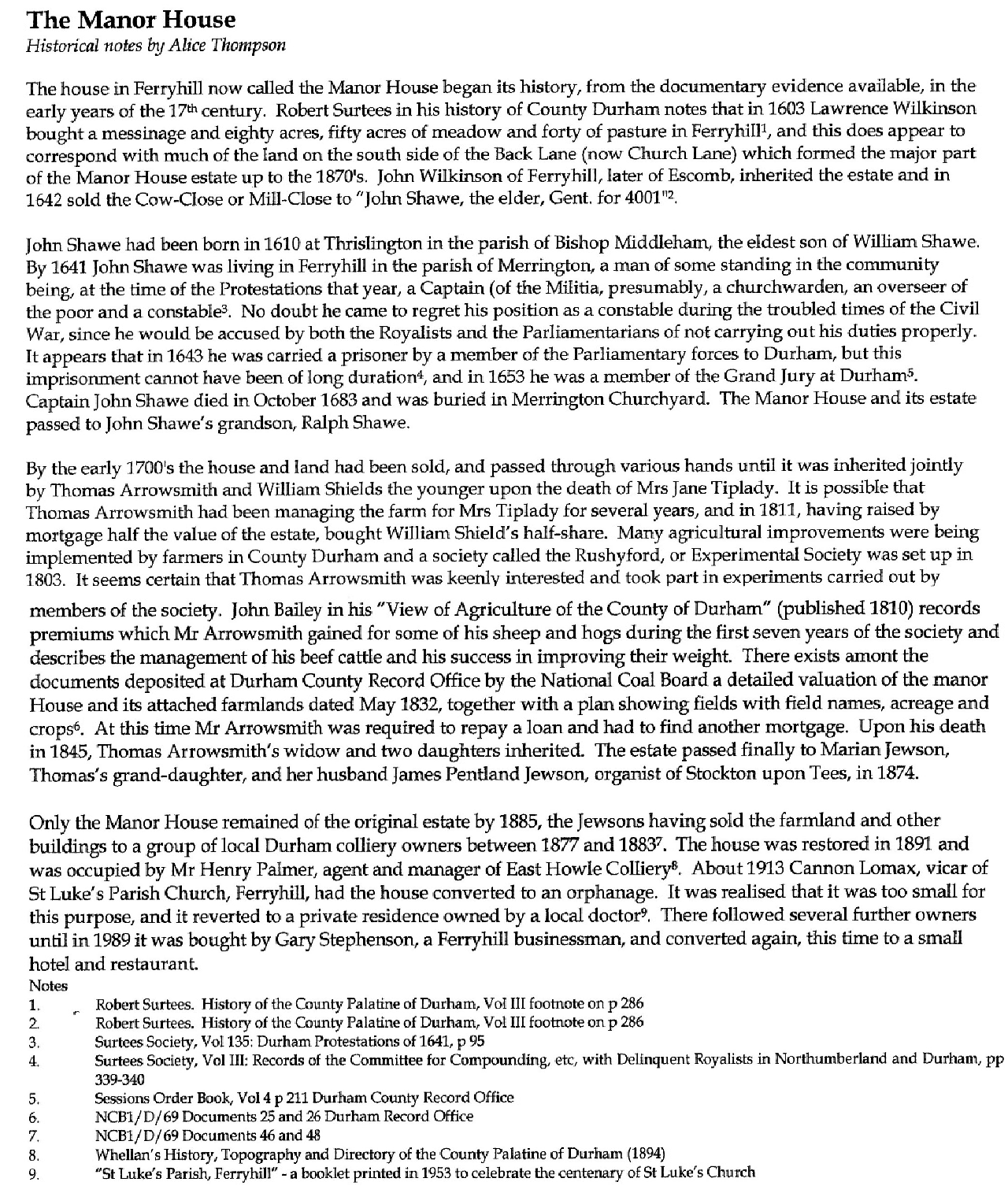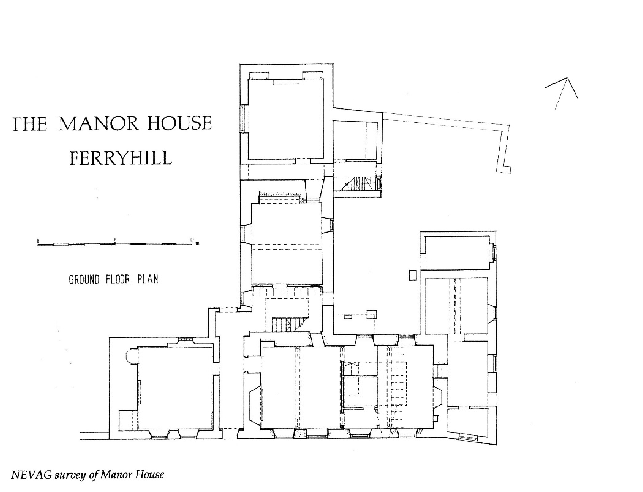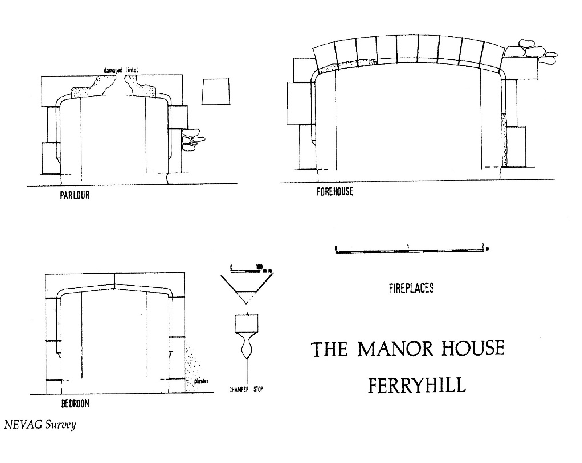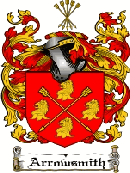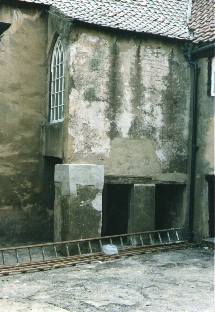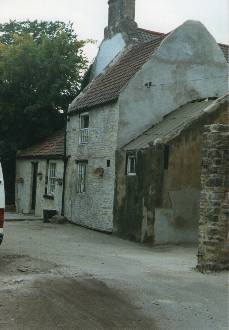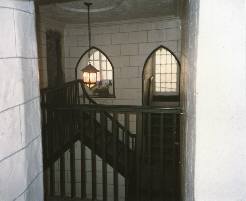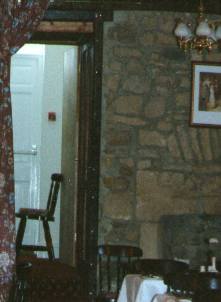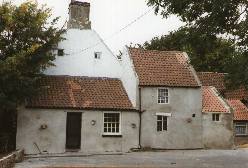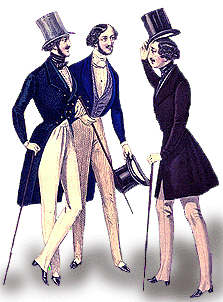The house, probably originally a long house. Late C16/early C17 with later C17 and C19 alterations. Occupied by Arrowsmiths in 1834, and by Shaws before them. Painted render with painted ashlars dressings; part boulder, part sandstone block plinth. Roof pan tiles with stone gable copings and brick- banded rendered chimneys. L-plan. Rubble wall attached to rear wing; stone- coped wall breaks forward from front. 2 storeys, 7 bays. 4-bay house at right originally separated by passage from lower down-house of 2 bays; down- house raised in C17; windows and stair altered in C19. Glazed door in third bay in chamfered, flat-Tudor-arched surround; long paired sashes on ground floor in first 2 bays, 2 wider sashes above these and door, and slightly shorter sashes grouped 2:1:1 in right part, all with late C19 glazing and projecting stone sills. Plinth to right of door only, with blocks in 2 bays to right of door and rough boulders beyond, interrupted by grated opening. Roof has raised gable copings, with curved kneelers at front, fading into stepped stacks with old brick bands.
Long rear wing has full-height extruded porch in angle, containing boarded door; Gothic glazing bars to overlight of panelled door to the Cottage at rear of wing, and to 2-centred-arched window in wing beside porch; other sashes-are varied; tripartite to left of Cottage door, and late C19 below 16-pane sash to left of Gothic window; first floor of Cottage lit by sash in rear gable peak. Right return shows first-floor stair extension added c.1800, with Gothic glazing bars, supported on single corner post; below this an early C18 floating cornice over window in rear wall of main range. First-floor horizontal sliding sash in wing painted to seem Gothic. Early C18 sundial in left wall of rear wing. Further small extension on right return of main block.
Interior: chamfered Tudor-arched stone-surround doorway from cross-passage leads to original house, which has wide ground-floor beams and stop-chamfered joists. Room to left of passage has similar beam and joists, c.1700 raised, fielded panelling, probably re-used, and cupboard with keyed round head but no architrave, and shaped shelves; one panel hinged (butterfly hinges) to give access to blocked stone-mullioned 2-light window, obscured by render on outer face. Circa 1800 stair in rear extension gives access to first-floor passages. Late C17 stair between 2 right end bays has had ground-floor lobby (now with door blocked and window inserted) with deep bolections moulding to doors to rooms leading off; open-well stair removed from ground floor; upper flight, reached from room to left, has wide handrail with sloping sides,on fat skittle balusters,and closed string. 2-panel doors on first floor in original house have richly-moulded central rails, and bolection-moulded surrounds. Blocked chamfered rectangular stone windows in end and intermediate gables. Roof of main house has 4 collared, halved-principal trusses. Raised roof of down- house has 2 upper crucks with collars and saddles, both with purlins resting on extended collars and saddle. Rear wing has long upper crucks in part nearest house, with collared trusses and intermediate rafters; rear part of wing not inspected.
